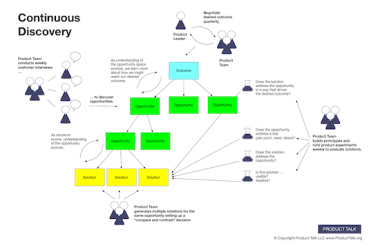This article is based on Jason Oakley’s talk at the Product Marketing MisUnderstood virtual event. As a PMA member, you can enjoy the complete recording here. For more exclusive content, head over to your membership dashboard.
Imagine being handed a job description that essentially says, “Do everything related to product marketing… by yourself.”
Sound familiar? You’re in good company.
According to the latest State of Product Marketing report, a staggering 47.5% of product marketing teams now consist of just one or two people, up from 39% in 2022. This trend is only set to accelerate as companies embrace leaner structures and longer bootstrap periods.
I like to think of solo product marketers as founding PMMs, building the function from the ground up. Even if there was another PMM before you, chances are, you’re building a lot of processes from scratch.
As a product marketing coach and three-time founding PMM, I’ve witnessed firsthand the unique challenges and incredible opportunities this role presents. It’s a high-wire act that demands strategic thinking, creativity, and the ability to build something from nothing. But for those who can master it, it’s also the most impactful and, dare I say, fun role in marketing.
Ready to unlock the secrets of succeeding as a founding PMM? I’ve distilled over a decade of experience building product marketing functions from scratch into five essential lessons. Whether you’re already in the trenches or considering taking the leap, these insights could be your roadmap to thriving in this exhilarating role.
Let’s dive in.
Lesson one: Assume that nobody knows what you do
When I first got into product marketing, I didn’t really know what it was. I was actually looking to work in customer marketing. So, I asked a couple of people, including some sales reps, what product marketing meant to them, and their perception was that PMMs mostly worked on slide decks – it was essentially a content creation role.
This experience taught me an important lesson: assume that nobody knows what you do. It’s your job to educate and remind them constantly. I say “constantly” because even if someone understands product marketing today, they can easily forget.
There are two sides to this: first, how do you get people to understand what product marketing is when you’re stepping into the role? And second, how do you maintain that understanding over time? Let me show you.
Step one: Go on a listening tour
To get people to understand the PMM role, I’d recommend doing a listening tour. If you’re starting a new job, this is a great opportunity to book coffee chats and meetings in your first couple of weeks when there aren’t many expectations on you yet.
Your listening tour doesn’t have to be limited to department heads. In a startup, there are likely some very influential individual contributors and sales reps you’ll want to talk to, too.
I like to focus on three goals throughout my listening tours.
- Building relationships with stakeholders: You’re going to work closely with these people, so it’s important to know them personally, beyond just work.
- Understanding their motivations and priorities: This helps you develop empathy for what they’re trying to achieve in their team.
- Getting a sense of what they think product marketing is and does: Try to understand what they’re expecting from you and what priorities they have for product marketing.
At this stage, you’re not trying to re-educate them or change how they see product marketing. You’re just listening and trying to get a baseline for how people perceive the role.
Step two: Build your product marketing charter
After your listening tour, take a step back and build a product marketing charter. This should essentially be a document outlining what product marketing does in your company. It’s your golden opportunity to define:
- Product marketing’s mission
- Who’s on the team (if there are multiple people)
- What your team does (the core areas of product marketing, the responsibilities that fall under each of these areas, the things your team owns, and the things you don’t own, but can support others on)
This charter becomes your foundation for educating others about product marketing’s role and value in the organization. It helps set clear expectations and aligns your work with the company’s goals.
Once you’ve created your charter, go back to the same people from your listening tour and educate them. This is your chance to say, “Based on what I’ve seen, here’s where I feel product marketing will fit within this company.” It’s also a great opportunity for dialogue. They might disagree with something or have questions, which will help you refine your charter and ensure you’re both aligned.
Step three: Remind people what product marketing does
We’ve covered the foundational part, but you also need to continually remind people what you do, what you’ve done, and what you’re doing. Here are three ways to do this:






